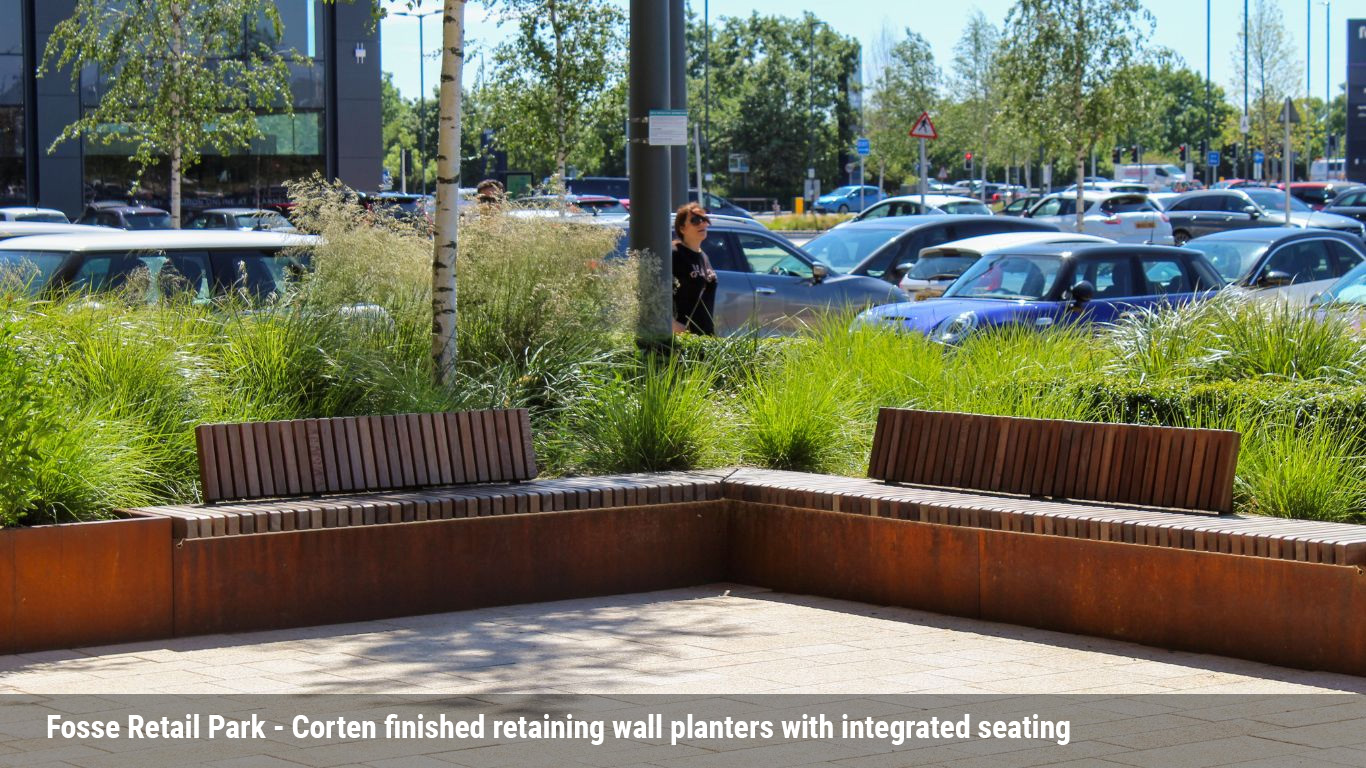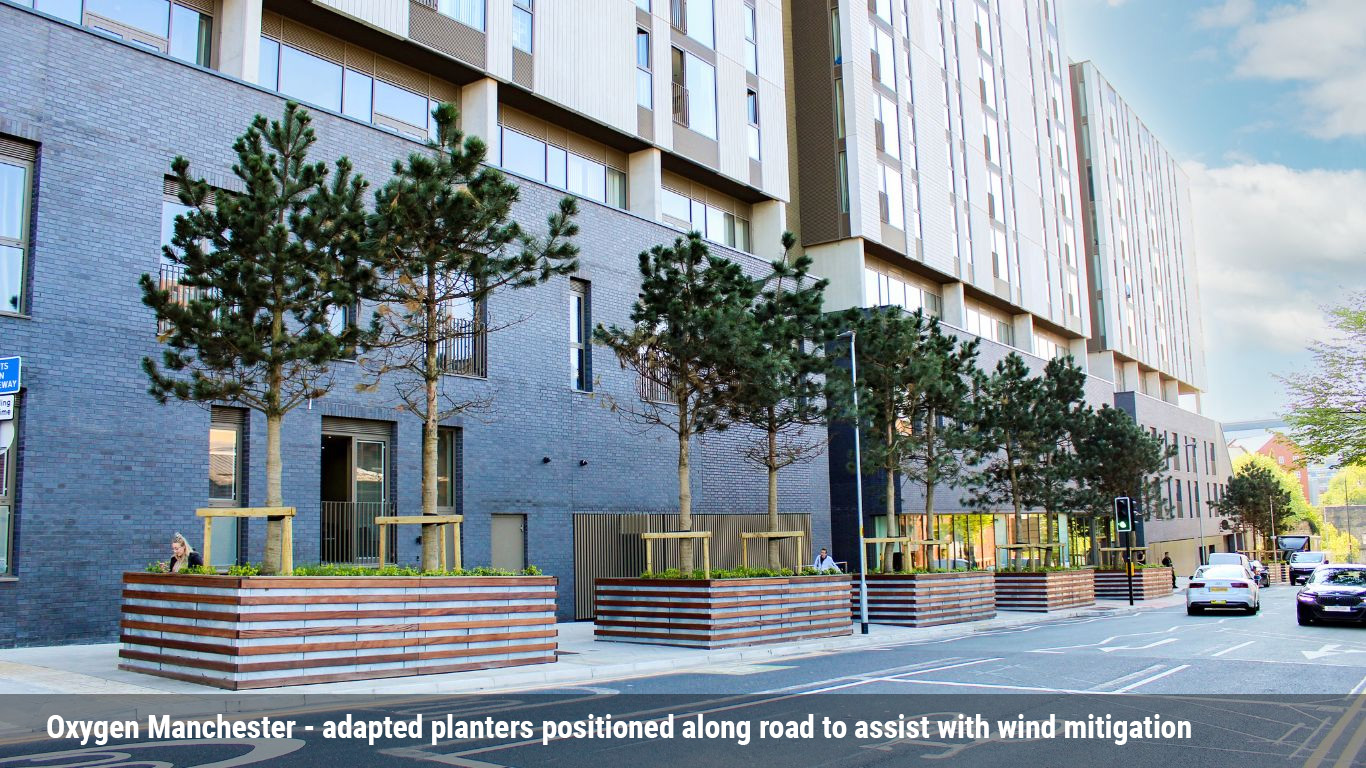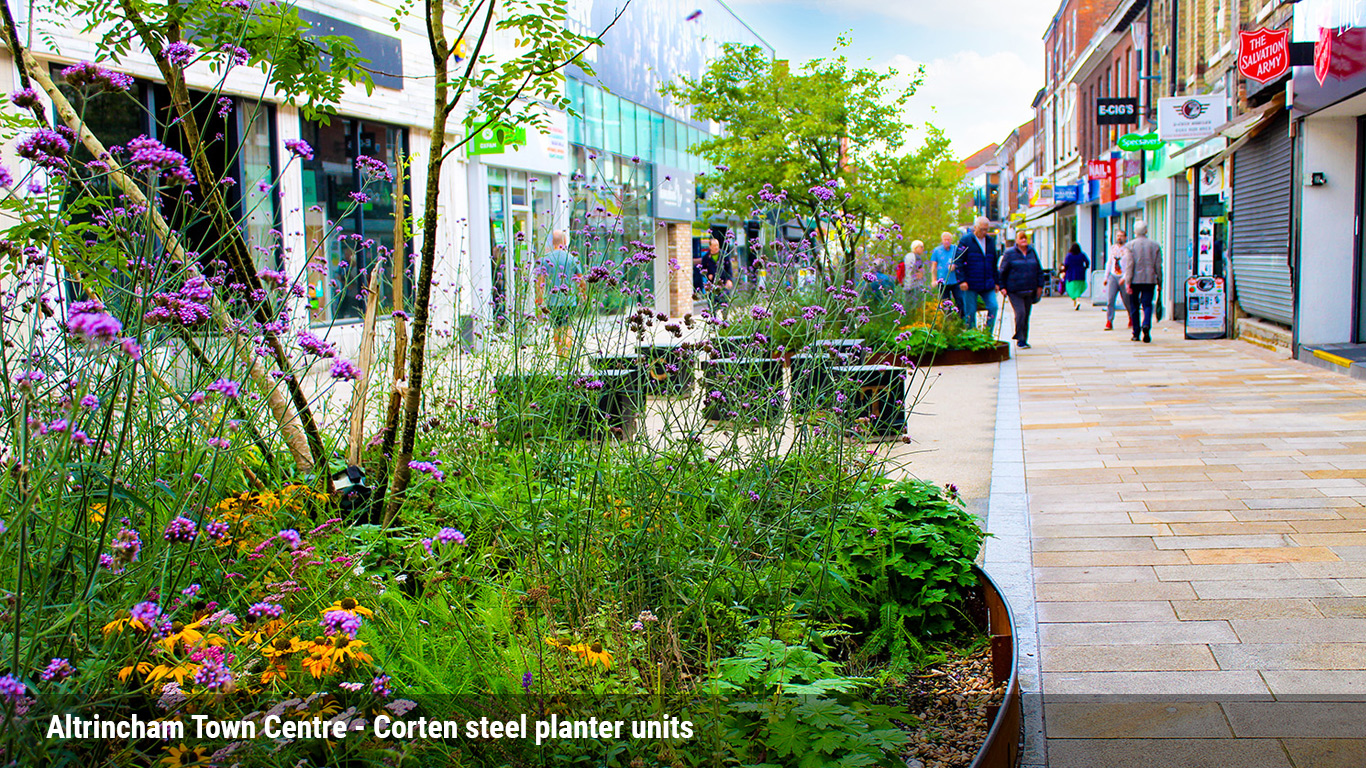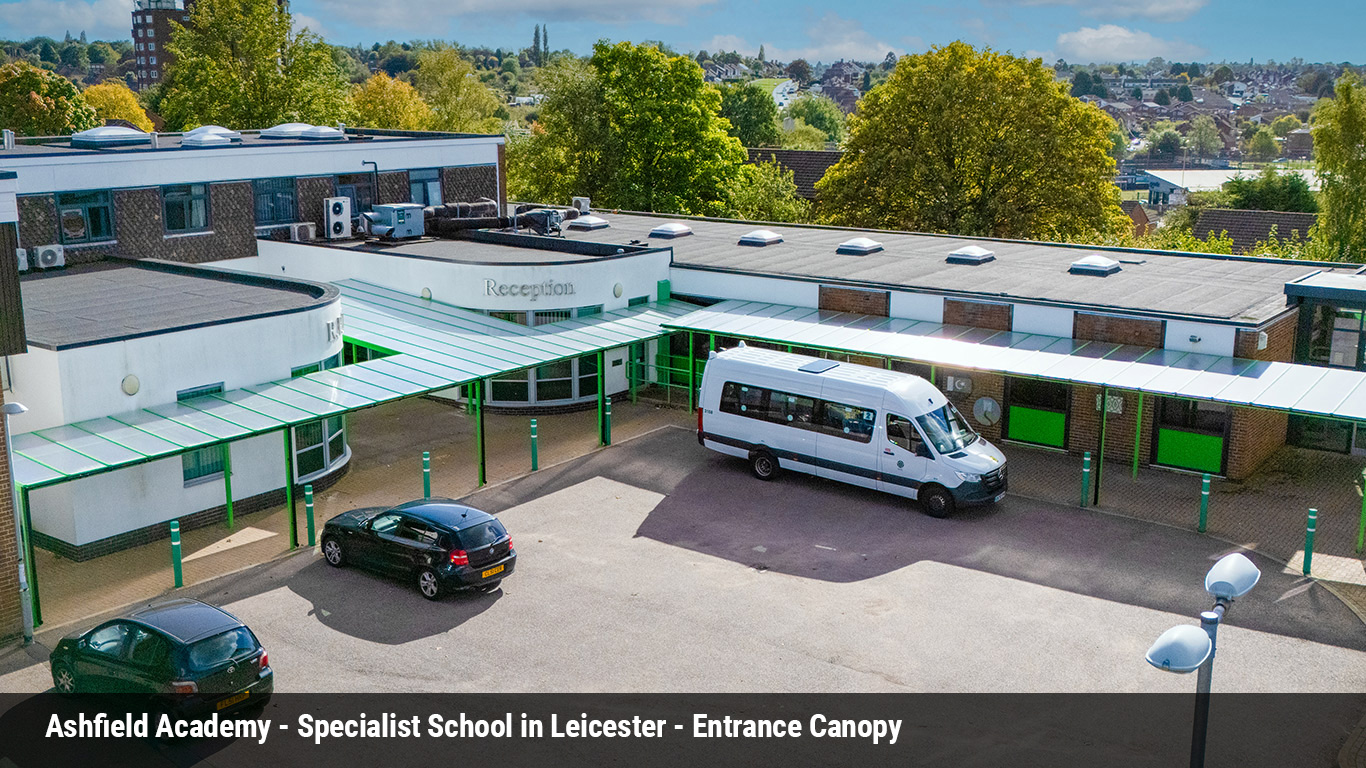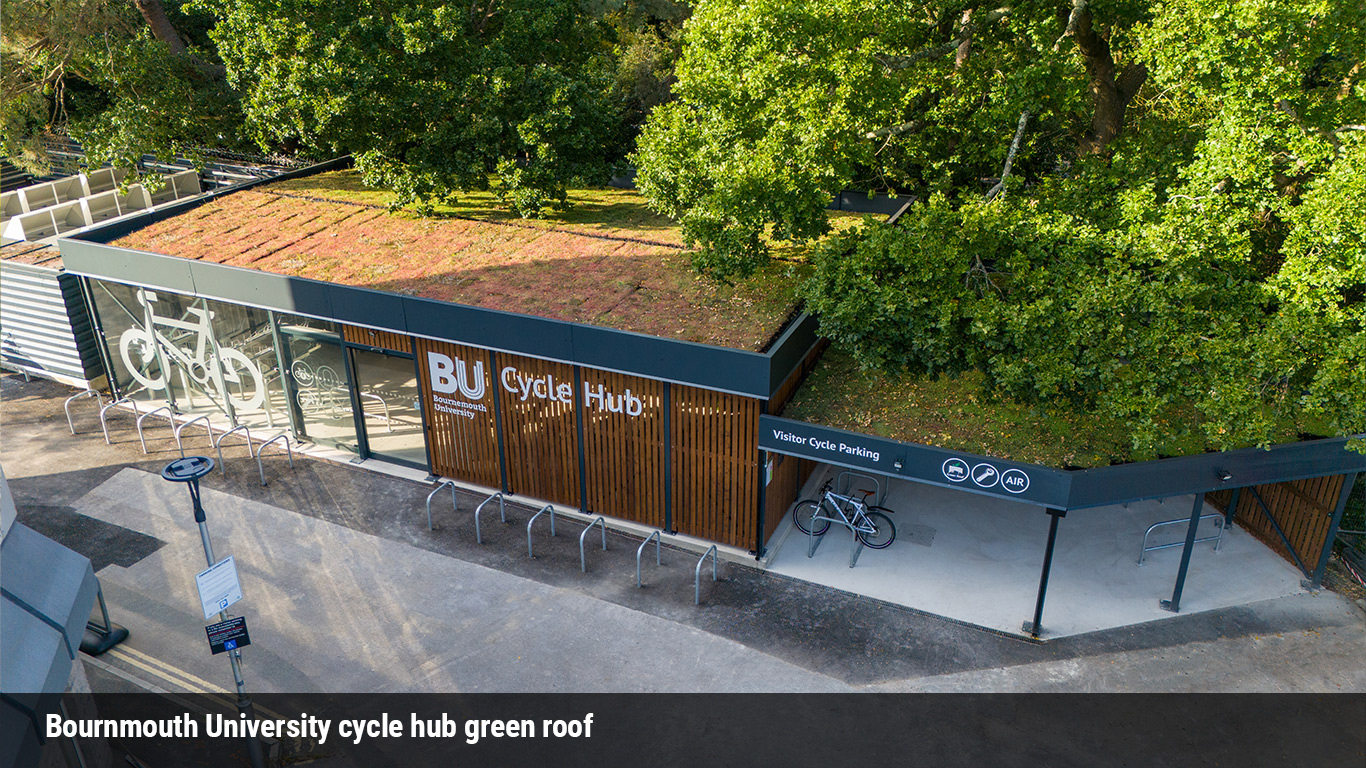Unlocking the potential of weather-deterrent urban planning
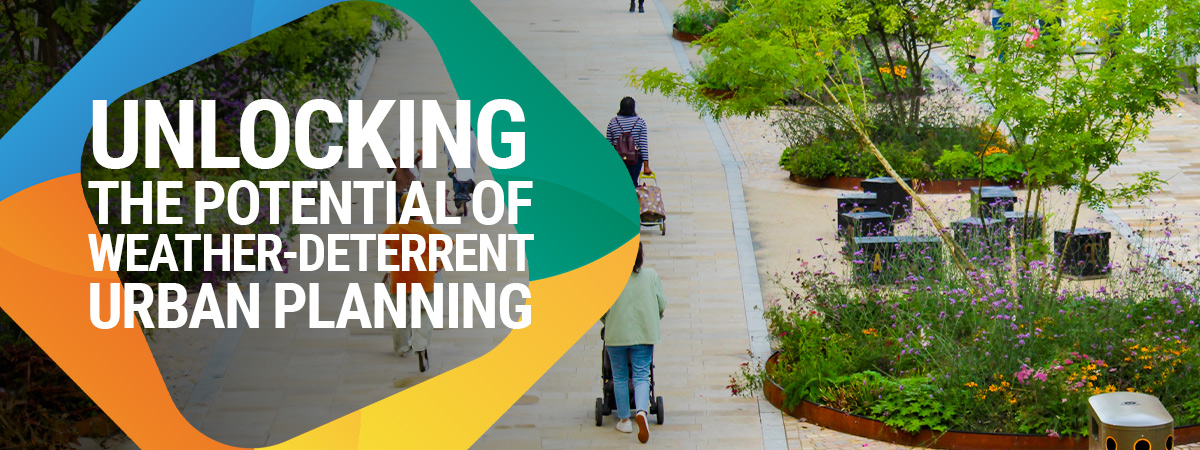
One of the most noticeable impacts of climate change that we are seeing today in the UK is the increased frequency of extreme weather events. Until relatively recently, the country experienced generally stable weather patterns with warm summers and cool winters, but in recent decades we have seen more periods of extreme heat or cold, an increasing number of severe storms and flooding, and even wildfires.
In order to create sustainable urban communities with the resilience required to accommodate more extreme weather conditions, our approach to town and city design and planning is changing too. That has led to an increased focus on weather-deterrent urban planning. This is the idea of designing urban spaces with the facilities and features required to ensure that the use of outdoor areas continues to be maximised despite the more severe weather conditions we face.

However, mitigating the effects of the weather, such as providing additional rainwater management solutions and shading to protect from strong sunshine, is just one dimension to the approach. These protective objectives go hand in hand with bigger picture goals to create safer, more sustainable and liveable urban environments where outdoor spaces are a major part of everyday life.
Hence why weather-deterrent urban planning strategies will also seek to increase the use of outdoor sites through aesthetic improvements and the introduction of more green areas. For example, adding planters in locations dominated by concrete and other hard surfaces not only helps with absorbing rainfall, but it also adds flora and fauna to give site users an opportunity to connect more with nature.
Considerations for creating more weather-resilient communities
Bailey Street Furniture Group (BSFG) works extensively with architects, developers, landscape architects and site owners to apply weather-deterrent thinking in the creation of outdoor spaces. Through an extensive portfolio of standard range street furniture and the flexibility to provide bespoke solutions, the group’s capabilities are ideally placed to bring plans for weather-resilient spaces to fruition.
Design objectives vary according to the site, but there are several key considerations when approaching weather-deterrence that apply to many projects:
- High winds – how can the site be designed to mitigate the effects of excessively strong winds to give users protection, and ensure it does not worsen the situation by contributing to a wind tunnel effect in the vicinity of tall buildings?
- Sunshine and heat mitigation – what measures would offer shading from strong sunshine to protect users from harmful UV rays, reduce heat stress and help to keep the site as cool as possible on the hottest days?
- Rain and flooding – will the design of the site allow for extreme rainfall to drain quickly and effectively without the risk of water gathering to form floods?
How planters can be key to weather-deterrent urban designs
One type of street furniture element that can be particularly beneficial within weather-deterrent urban designs is the planter. These products are available in a wide variety of styles and designs, with standard and bespoke designs offering the flexibility to allow tailoring to the needs of sites.
Rainwater management
One of the major benefits of planters is how they assist with rainwater management as one project by BSFG at Fosse Park in Leicester illustrates. Here a number of substantial Inspira Planter units were commissioned to run along the front of the newly built retail units with some spanning in excess of 36 metres in length.
The high retaining walls of these Corten finished planters means they have a high capacity, holding up to 64 tonnes of soil which provides 103m² of planting beds for all year-round foliage. This means that they play a key role in absorbing rainwater and allowing it to drain naturally into the ground. They also contribute to a biodiverse and visually appealing setting, particularly given how they were combined with curved Inspira Form planters to surround the circular retail spaces.
Wind mitigation
Another role that planters can play is in respect of wind mitigation. At Oxygen Manchester, a luxury 32-storey neighbourhood in Manchester city centre, large bespoke planters were supplied by BSFG to elevate the surroundings and provide greenery on the site.
The units, which were specially adapted from BSFG’s standard Stoke planter range, are up to 5m long and are positioned alongside a road specifically to assist with wind mitigation. Working closely with the designer and contractor, BSFG’s team delivered a structurally calculated design that would reduce the impact of the wind on the building.
Shading and heat mitigation
A third important benefit to planters is that they can contribute to cooling of the site. Strategically placed planters can be used with carefully selected plants and trees to provide shade. This means users can still enjoy the site in the height of summer by escaping the effects of the strongest sunshine and the risk of heat stress is reduced.
This was one of the reasons for the inclusion of planters in a scheme to rejuvenate Altrincham Town Centre in Cheshire. BSFG provided a series of low-level oval Corten steel planter units based on the Inspira modular planting system containing clusters of planting and foliage. These planters not only help to prevent water build-up due to the large trees and foliage, but they also cool the area during hotter conditions.
Additional benefits
In addition to their weather-related advantages, planters offer a whole host of benefits for sustainable urban site design. For example, incorporating more trees and plants helps to improve air quality and may assist with pollution control. This is because plants remove pollutants from the air through respiration and photosynthesis, and they can also act as barriers to separate people from polluted air.
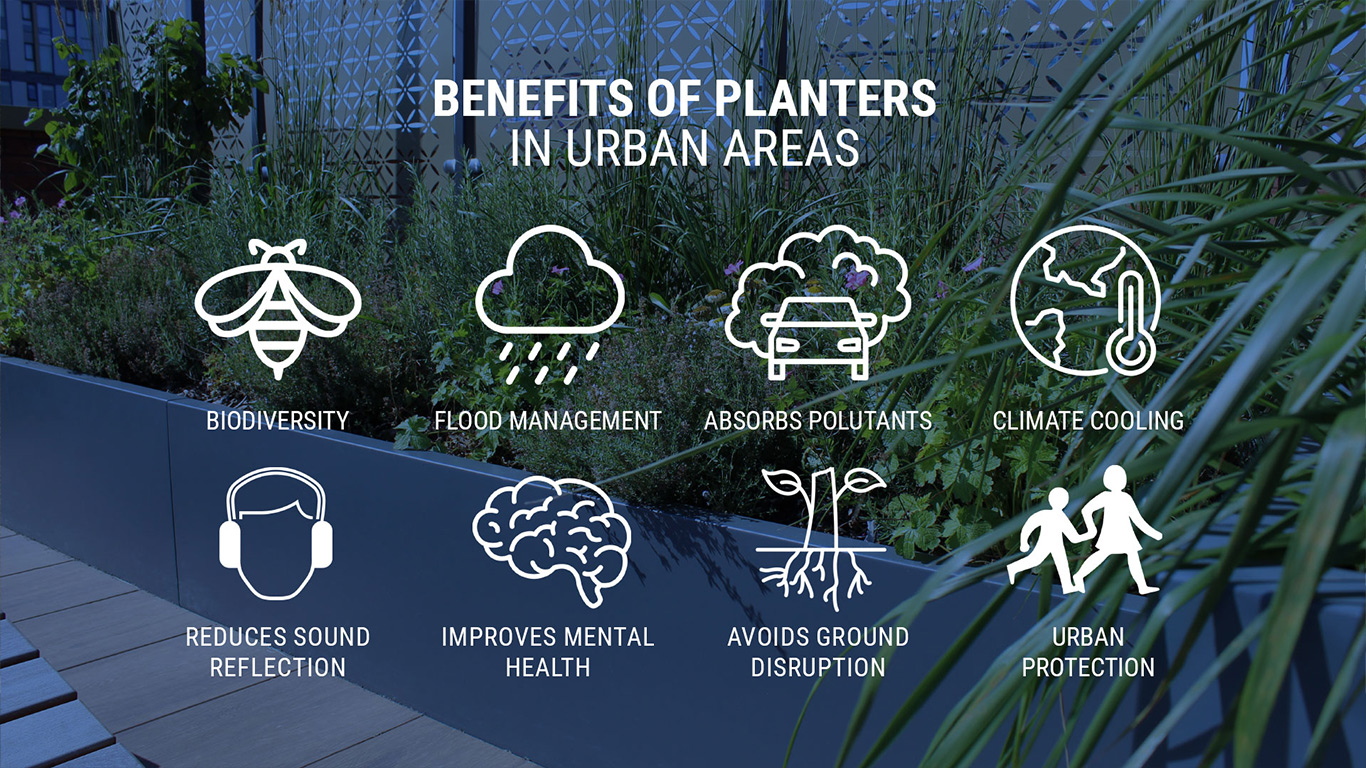
Secondly, planters act as sound dampeners to help create more acoustically comfortable outdoor spaces. They improve the outdoor soundscape through the addition of dense and sound absorbent plants, countering the effects of soundwaves generated from everyday noise bouncing off hard surfaces like paving and walls. This is important for the wellbeing of site users and encouraging them to spend more time outdoors.
Finally, there are biodiversity benefits to installing planters. Adding flowers, shrubs, trees and other plants in locations which are dominated by buildings and hard surfaces encourages wildlife – absolutely crucial to ensure a development is environmentally sustainable.
Maximising the sustainability benefits of shelters
In addition to planters, shelters and canopies are fundamental to weather-deterrent urban planning. They ensure that an outdoor space can remain usable during rainfall and, subject to the design of the shelter or canopy, they can provide solar shading to prevent heat stress.
A good example of how a canopy can be used to maximise a site’s usability is a project completed by BSFG in Leicester. At the Ash Field Academy, a specialist school providing education and support for pupils aged 4 to 19 with complex health and medical need, a large covered entrance canopy was required to ensure the comfort and safety of pupils and staff during morning drop-offs and end-of-day collections.
The nature of the school means that specialised wheelchair-accessible buses are used daily. This meant that the canopy would need to be extensive, spacious and weather-proof to effectively protect pupils from adverse weather conditions – made all the more important given the complex health needs of the young people who attend the school.
Canopies and shelters can also be designed to incorporate green roofs to further assist with rainwater management and boost biodiversity. This is exactly why a green roof was chosen for a new cycle hub project at Bournemouth University which was delivered by BSFG in 2024.
Here, a key design goal for the 10m x 23m, 3m high facility was to harmonise it with its natural surroundings. Redwood timber cladding was used in its construction to reflect the nearby woodland, and a green, living roof was incorporated to reduce the building’s environmental impact, improving biodiversity and acting as an insulating layer.
Find out more about our projects here; https://www.bsfg.co.uk/case-studies
Artform Urban Furniture | Adlington Business Park | London Road | Adlington | Cheshire | SK10 4NL
Tel: 0800 542 8118 | Int: +44 (0)1625 877554 | enquiries@artformurban.co.uk
